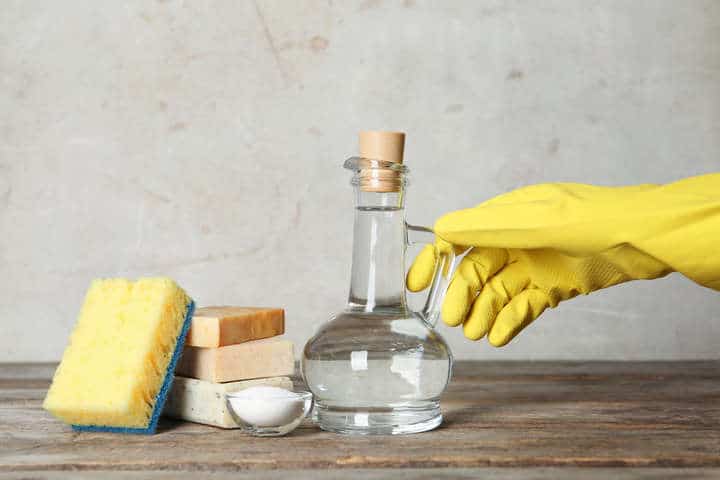If there’s a safe place to be, this is your home. With the pandemic, perhaps you may have been cleaning your home more frequently than usual. Usually, however, most household cleaners are laden with plenty of chemicals. Not only is this harmful to your health and environment, but it could also be costly.

If you haven’t started with that practice already, there are actually so many ways to disinfect and clean your home using eco-friendly options. Change begins at home, and if you can foster a hygienic household while also being environment-friendly, go for it.
To help you get started with that change, below are five eco-friendly tips for cleaning and sanitizing practices:
1. Lemon
By now, you may have heard about lemon’s antiseptic and anti-bacterial properties. If you look at many chemical and eco friendly commercial cleaning products, you’ll find one ingredient that’s quite common: lemon.
The recipe for your own natural lemon cleaner is simple. All you have to do is mix the juice of two lemons and water in a spray bottle, and then you have a powerful cleaning agent.
Lemon can be used to clean the following areas in your home:
- Clean the microwave;
- Polish furniture;
- Keep your fridge smelling fresh;
- Brighten up faucets;
- Wipe the floors.
2. White Vinegar
White vinegar is one of the staples you’ll surely have in your pantry. But did you know that it can also be a good cleaning agent? Since white vinegar is acidic, it makes a good agent for getting rid of hard water stains and rust.
You can use white vinegar to clean these in your household:
- As a window cleaner, by mixing equal parts of distilled water and vinegar;
- To clean your automatic coffee maker, by running the coffee maker through one cycle of equal parts of distilled water and vinegar;
- For no-rinse cleaning your floor, by mixing a half cup of water with a gallon of water;
- For deep cleaning glasses and dishes, by adding 2 cups of white distilled vinegar to the bottom of your dishwasher.
3. Baking Soda
Baking soda is more than just a baking ingredient you’re keeping at home. It’s also a potent natural household cleaner. You don’t need anything fancy for this, as a simple paste of baking soda and water mixture is enough to do the trick.
You can use this natural solution to clean the following:
- Trash can deodorizer, by sprinkling a small amount of baking soda into each of your trash bins weekly or every time you change to a new trash bag. Doing so will help absorb odors.
- Stovetop cleaner, by sprinkling baking soda directly on the stovetop, and letting it sit for at least five minutes. After, wipe it with a wet sponge.
- Fruit and vegetable cleaner, by mixing water, lemon, and baking soda, you can wash your fruits and vegetables.
- Floor cleaner, by mixing ½ cup baking soda in a bucket of warm water.
4. Borax
Borax is a powder ingredient, quite similar to baking soda’s appearance and functions, but a lot stronger. It’s a natural type of bleach, which can be used as a bleach substitute for cleaning and washing off stains in clothing.

Apart from these, there are other uses of borax:
- Clean your carpet by mixing a half cup of borax per gallon of water;
- Make your own homemade laundry detergent;
- Kill weeds sprouting in your driveway;
- Clean your porcelain and aluminum cookware;
- Freshen up your fridge.
While borax may be a natural ingredient, you have to take extra caution when using it. Borax can irritate your eyes and skin. It may also hamper your normal breathing. So, be sure to keep it out of reach from children.
5. Air Purifying Plants
There’s all that buzz today about bringing the outdoors in, and there’s a good reason beyond the aesthetics. There’s no better way to keep your home’s air purifier than having plants around your home. More so, many plants can bring you some scents, which you may be looking for. This means you can also avoid spraying any chemical sprays or cleaners.
You can start this pursuit by opting for the following plants:
- English ivy;
- Dragon tree;
- Peace lily.
Conclusion
As you can see, it doesn’t take much to save money and switch to a greener cleaning routine. Once you get the hang of the changes, you’ll perhaps even ask yourself why you didn’t get head-on with that eco-friendly routine any sooner.
Many of the ingredients and tools above may already be in your pantry, so there isn’t much to purchase anymore. All that’s left for you to do now is to start applying those changes.





